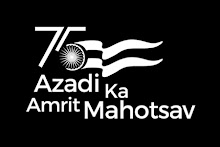31.10.11
Of Rapid Growth Markets forecast
NIMZ
Omar & the AFSPA
Unknown militants on Tuesday launched four attacks on security forces across Kashmir, setting off an unusual war of words between the ruling National Conference and the Army and sharpening the debate over withdrawal of the Armed Forces Special Powers Act. Sheikh Mustafa Kamal, general secretary of National Conference, blamed the Army for the attacks targeting security forces. “Of course, it was Army which engineered the attacks on security installations across Kashmir Valley. They carried out the attacks to oppose chief minister Omar Abdullah’s design to lift Armed Forces Special Powers Act from some areas in Jammu and Kashmir,” he said. Inspector general of police, Kashmir Range, S M Sahai said that militants were desperate to strike on the eve of Diwali. “Today’s attacks point towards militants’ desperation. They want to show their presence and they chose Diwali ,” he said. The IGP said they were looking into Tuesday’s attacks. “We are looking whether there was any link between the four attacks and whether it was serial attacks or not,” he said. A police spokesman said three CRPF troopers sustained injuries when unknown militants hurled a grenade on a bunker at Akhara Building, Maisuma. “All the injured were shifted to SMHS Hospital, Srinagar for treatment,” he said. “In another similar incident, a grenade was hurled on a CRPF bunker at Batmaloo. However, there was no loss of life and property,” he added. The blasts triggered panic and tension in the city centre Lal Chowk and at Batmaloo with the authorities ordering a security beef-up. Searches were also conducted by police and CRPF troopers in Budshah Chowk area. Although Kamal has been known for his opposition to the Centre, his frontal attack on Army for the explosions in which CRPF jawans were injured marks a serious turn in the dispute over whether AFSPA should be withdrawn. J&K CM Omar Abdullah had told a TV channel after deliberations with the visiting central team led by cabinet secretary Ajit Seth that he would go ahead with his plan for AFSPA’s withdrawal before the annual Darbar move to Jammu next month.
IAF to buy six more Super Hercules
Somewhere in Uttarakhand....
The Azim Premji Foundation
Maruti to set up shop in Gujarat
India's F1 moment



23.10.11
Of Delhi & Kathmandu

Exempted from the RTI act
1964
Advani against Right to Recall
Noida land acquisition
Shed negativity :PM
22.10.11
PM on Diwali gifts
Rupee below 50/$
Net State Domestic Product

20.10.11
Mobile numbering
Tata Indicom is now Tata Docomo
Maharashtra legislature is 75 !

Vadodara - Mumbai Expressway

Help India win
19.10.11
This Diwali
The Buddh International Circuit



Of N-plant safety
CST to Navi Mumbai Airport: Railway corridor planned

India tops in Retail theft
The study was conducted across 43 countries between July 2010 and June 2011. In India, it covered 100 retailers, of which 60 were part of modern chains and 40 from the unorganized sector.
The biggest contributor to losses was thefts by customers, accounting for 47.6% of the total, followed by pilfering by employees at 25.5%. The losses have, to be sure, declined 12.5% from a year earlier, according to the study. To reduce thefts, retailers in the nation are spending more money on security solutions. Companies have also minimized their losses by providing more training to employees and assigning responsibilities on team and store managers for losses.
18.10.11
Electoral reforms
“The state will pay only the legal expenses which is not the concern as people spend crores in elections,“ chief election commissioner (CEC) S.Y.Quraishi said when asked for his reaction to the government move.
The issue of state funding of elections has been debated for years but due to a lack of consensus, no decision could be taken. The law ministry plans to hold an all-party meeting on electoral reforms in the coming days in which the issue of state funding of elections could also come up. Quraishi said state funding will “not solve the problem of black money“ which afflicts the process.
The inclusion of right to reject proposal in voting, said Quraishi, could be misused to put out an unintended political message, especially in places such as Kashmir and the north-eastern states where people already feel alienated. “We have to see the implication of everything for the country,“ said the CEC advocating 49-O button in electronic voting machines (EVMs) instead, which helps voters express their unhappiness over the candidates.
He said, “Instead of a negative force of right to reject, why don't you select a good candidate.“ The CEC said the commission had recommended for having 49-O button in EVMs to guard the privacy of voters.“Because if you do not go to vote, one could be intimidated. Secondly, somebody may go in your place to vote instead of you. To guard against this, we have suggested having 49-O button,“ Quraishi said.
He said the button did not imply or mean the right to reject. “It will only mean you will be able to express your opinion against a candidate. It will not count in your votes.“ On the right to recall plan, the CEC said, “It is not possible in India, which is a large country. It is there in smaller countries like Switzerland. It can be there in a panchayat election, but not in bigger elections.“
He said, “Every loser will start the right to reject from the day he loses“, and suggested that voter education as a good solution to it. “We can instead educate the voters to come out in large numbers and vote for a good candidate.
Dr.Rajendra Prasad's watch

Congress scores a big zero
Sanjiv Bhatt out on bail

Of Sufi Islam....
National Aviation University
17.10.11
Analogue cable to be digitised

Hyundai Eon

11km of Highways being built daily
Against a target of 7,300km of national highways, NHAI has awarded 2,591km; another 2,659 km to be awarded in 4 months
8,917km NH built during NDA rule 17,236 km built during UPA-I tenure; 10,000km under UPA-II
16.10.11
The GST Network
Ahmedabad's BRTS completes 2 years
Somewhere in UP....


Area: 33.43 hectares
15 statues of Mayawati & other Dalit leaders
Dome in Central Plaza houses statues of Mayawati, Ambedkar and Kanshi Ram
24 pink sandstone elephants at park
25,000 stone carvers & masons employed
2,500 masons worked exclusively on central dome
33 sandstone & bronze pillars, some as high as 300 ft
UP Chief minister Mayawati’s dream project – Dalit Prerna Sthal and Green Garden – was inaugurated with much fanfare amidst Buddhist chants, showering of flower petals and cheering by BSP supporters. Dressed in a cream-coloured salwar kameez, her trademark handbag in place, Mayawati arrived in a chopper exactly at 5 p.m. Landing at the helipad constructed specially for the visit at the Apeejay School grounds in sector 16A, she drove up to the park located in Sector 95, followed by a convoy of sports utility vehicles amidst heavy security. She was waving and smiling at the thousands of supporters who had gathered to witness the grand opening. As several camerapersons captured the moment, a beaming Mayawati went around the premises, accompanied by the who’s who of the UP administration. Buddhist monks chanted prayers. Mayawati was accompanied by her parents Ramrati and Prabhu Dass and her niece. The opening ceremony was short and crisp – a red ribbon was cut and a button pressed to formally open the park and 20 other projects in Gautam Budh Nagar district. The chief minister used the inauguration as an opportunity to sound the bugle for the assembly elections scheduled for early next year. In a 40-minute speech that recalled the efforts of the BSP for bringing about development in the state, she lashed out at all opposition parties, terming them anti-Dalit and anti poor. Spread across 33.43 hectacres, the park that’s commonly referred to as Dr Ambedkar Park, was decked up with flowers and elaborate lighting arrangements and guarded by 25,000 policemen. Forty VIPs, including politicians and bureaucrats, 10,000 party supporters and onlookers witnessed the inaugural ceremony. Unmindful of the criticism from several quarters against the construction of the Rs 685-crore mammoth memorial, Mayawati described the inauguration as one that would “be inscribed in golden letters in the history of the nation.” The park, she said, commemorated and honoured the efforts of the Dalit leaders for the upliftment all backward communities, adding that the BSP was the only party to have honoured Dalit leaders like Kanshi Ram,Dr Bhimrao Ambedkar, Narayan Guru and Jyotiba Phule. Apologising for the strict security arrangements that had kept everyone from even taking a peek into the park until today, she said it would now be open for visitors from across the country at a nominal entry fee of Rs 10. As a special treat, the UP chief minister Mayawati invited all spectators to take a look inside ‘Prerna Sthal’, promising that the park would remain open till late in the night for everyone to catch a glimpse of the grandeur. Designed by architects Design Associates Inc, the park has been divided into three parts - Column Plaza, Central Park Plaza and Ambedkar Plaza, separated by two water fountains. Column Plaza is dotted with several 300ft high pillars crowned by four-headed elephants and another iron pillar like structure at the centre, complete with a chakra and four elephants. Ambedkar Plaza houses 12 Dholpur and Mirzapur stone statues, brought from Lucknow. One is of the CM herself and the others of Gautam Buddha, B R Ambedkar and Kanshi Ram. The grander Central Plaza houses the dome that has three more life-size statues of the CM, Ambedkar and Kanshi Ram.



























